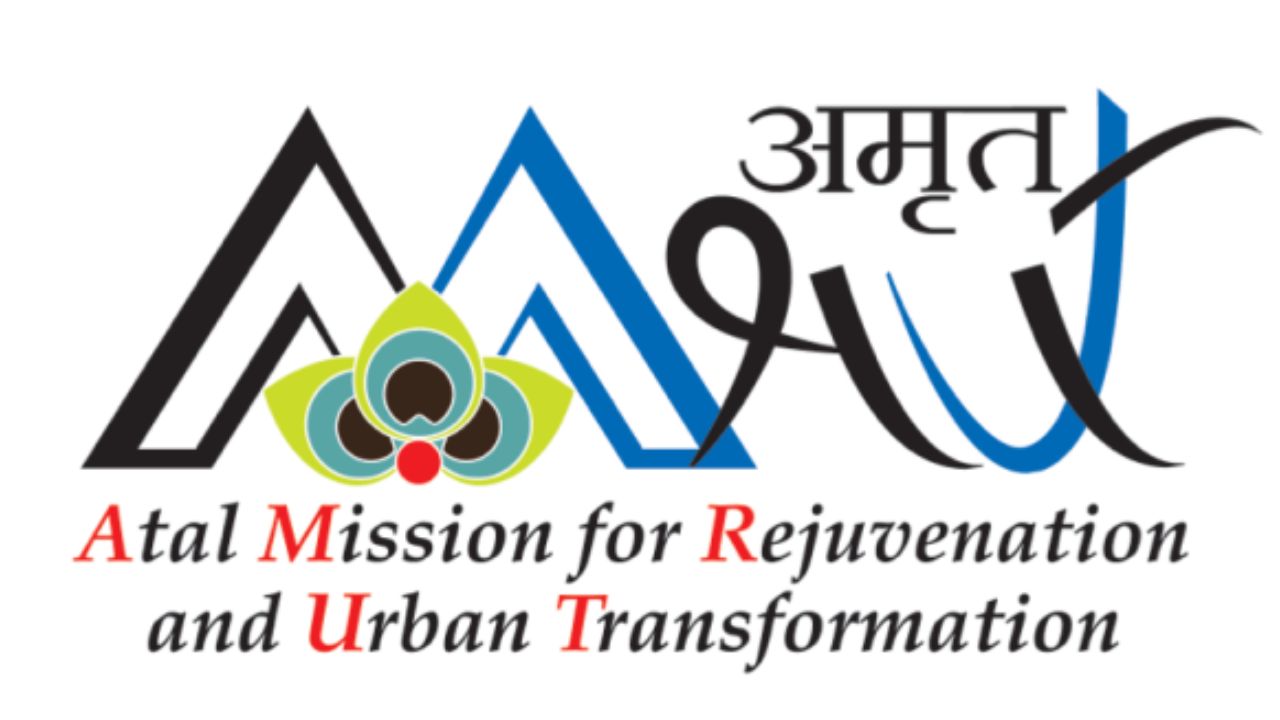For any city to be truly “smart” or world-class, it must first get the basics right. What are these basics? It’s the essential, often invisible, infrastructure that ensures a healthy and dignified life for its citizens: a reliable supply of clean tap water, a functional drainage system, and a scientific way to manage sewage. For decades, many growing Indian cities have struggled to provide these fundamental services to all their residents.
To address this core challenge, the Government of India launched the Atal Mission for Rejuvenation and Urban Transformation (AMRUT) on June 25, 2015. While its sister program, the Smart Cities Mission, focuses on innovative tech solutions, AMRUT is dedicated to the critical task of building and upgrading the foundational infrastructure that makes urban life possible. It’s about ensuring every family has access to the essentials.
What is the AMRUT Mission? The Core Idea
- Full Name: Atal Mission for Rejuvenation and Urban Transformation (AMRUT)
- Launched: June 25, 2015
- Ministry: Ministry of Housing and Urban Affairs (MoHUA)
- The Goal: The mission’s primary goal is to ensure that every household has access to a tap with an assured supply of water and a sewerage connection. Secondary objectives include developing green spaces, reducing pollution, and promoting public transport.
- Coverage: The mission was initially launched in 500 cities across India, covering all cities and towns with a population of over one lakh.
What Does AMRUT Focus On? The Priority Areas
AMRUT has a very clear and targeted focus on providing essential urban services. The priorities are ranked to ensure that the most critical needs are met first.
- Water Supply: This is the number one priority. The mission funds projects to create and augment universal water supply systems, build water treatment plants to ensure quality, and repair old pipelines to reduce water loss.
- Sewerage and Septage Management: The second priority is to provide universal coverage of sewerage networks and build sewage treatment plants (STPs). In areas where laying a sewer network isn’t feasible, the mission supports proper septage management (the safe collection, transport, and disposal of waste from septic tanks).
- Stormwater Drainage: To combat the problem of urban flooding during heavy rains, the mission provides funding for the construction and improvement of stormwater drains.
- Green Spaces and Parks: AMRUT aims to improve the quality of life and the aesthetic value of cities by funding the development and maintenance of public parks and green spaces. 🌳
- Urban Transport: The mission also promotes non-motorized transport by funding projects to create dedicated paths for walking and cycling.
AMRUT 2.0: The Next Step
Building on the success of the first phase, AMRUT 2.0 was launched in October 2021 to take the mission even further. Its goals are even more ambitious:
- To provide 100% coverage of water supply to all households in all statutory towns across India (expanding beyond the original 500 cities).
- To provide 100% coverage of sewerage and septage management in the 500 AMRUT cities.
- To promote a “circular economy of water” by focusing on the rejuvenation of urban water bodies and promoting water conservation and reuse.
The Human Touch: A Healthier Neighborhood
For years, Ashok’s family and their neighbors lived in a locality where the lack of a proper sewerage system was a daily nightmare. Overflowing septic tanks and open drains were a common sight, creating a foul environment and making the area a breeding ground for diseases. Every monsoon, the situation would worsen, and cases of dengue and cholera would spike, especially among the children.
Then, under the AMRUT mission, their city undertook a massive project to lay a new underground sewerage network. For several months, there was disruption as the roads were dug up. But the final result was transformative. The open drains vanished, and every house was connected to the new sewer line.
The impact on the community’s health was immediate and visible. The streets became cleaner, the foul smell disappeared, and the incidence of waterborne diseases dropped dramatically. For Ashok, the invisible infrastructure of the sewer line brought a very visible improvement to his family’s health and the dignity of his entire neighborhood.
Impact and Challenges 📈
The mission has made significant progress in strengthening India’s urban backbone.
Impact
Under the first phase of AMRUT, a massive number of new water tap connections and sewerage connections have been provided, significantly improving service delivery in the 500 mission cities. Over 1,100 parks have been developed, adding much-needed green space to urban areas. The mission has also been successful in pushing states to adopt important urban reforms.
Challenges
- Complex Execution: Laying extensive water and sewer pipelines in old, densely populated cities is a highly complex and disruptive process that often faces delays.
- Financial Health of Cities: The long-term success of these new assets depends on the ability of the city’s Urban Local Body (ULB) to operate and maintain them. Many ULBs face financial and technical capacity constraints.
- Inter-Agency Coordination: Urban projects require seamless coordination between multiple agencies (like the Public Works Department, the Water Board, and the Municipality), which can be difficult to achieve.
Conclusion
The AMRUT Mission is a foundational program that is systematically addressing the deep-rooted infrastructural deficits in our cities. By focusing on the absolute essentials of water supply and sanitation, it is improving public health, safeguarding the environment, and enhancing the overall quality of urban life for millions. It’s a critical initiative that proves that before a city can become “smart,” it must first become healthy and resilient. AMRUT is laying that vital groundwork, building the essential infrastructure upon which the cities of tomorrow can thrive.
